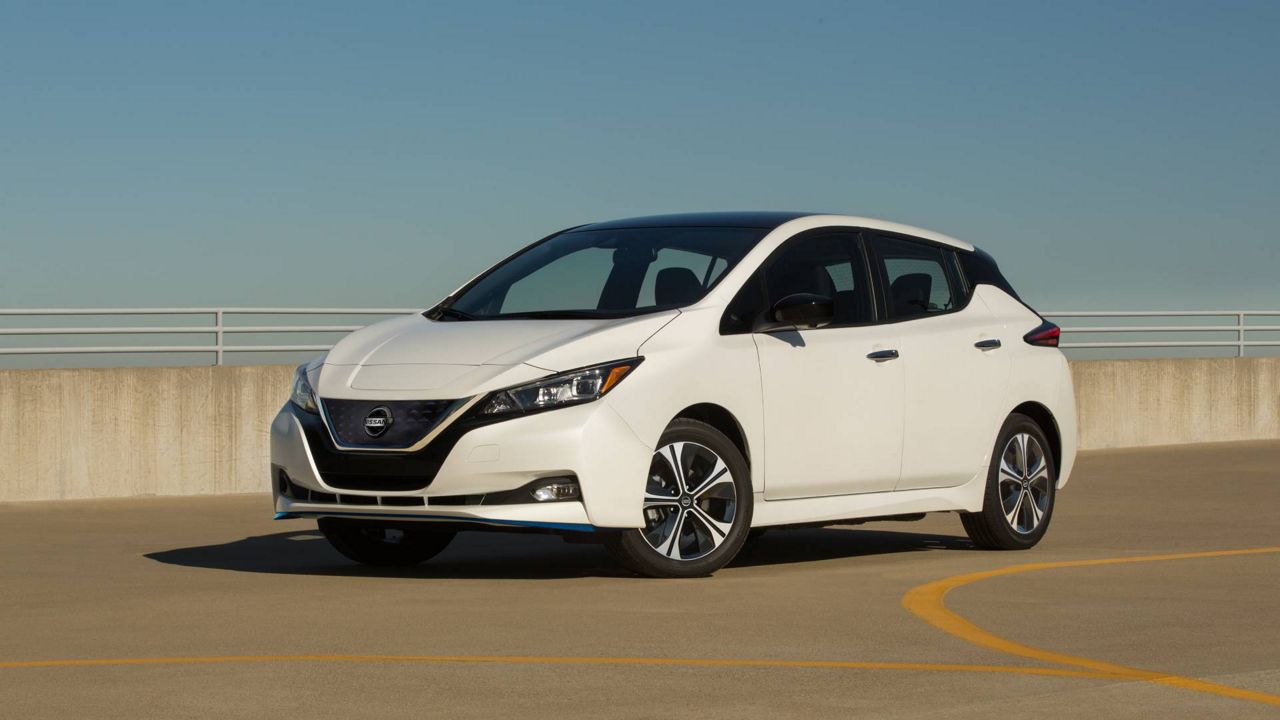Sticker shock is often a barrier to buying a car of any kind, but when it comes to electric vehicles, there’s a price premium that can be a deal-breaker.
Prices for a new EV vary from $32,525 for a Nissan Leaf to $186,300 for a whiplash-inducing Porsche Taycan Turbo S — and a smattering of makes and models falling somewhere in between.
But used EVs are another story, often costing just a fraction of their original purchase price, and sales are growing. Used EV purchases in California have increased ninefold from 2014 through the end of September this year, from just 0.1 percent of total used car sales six years ago to 0.9 percent of the 4 million used cars sold in the state annually so far this year.
“You’re going to see a lot more people willing to embrace an EV on the used market than new because of the drastically lower prices,” said Karl Brauer, executive analyst with the automotive research website, iSeeCars.com.
That’s especially true of longer-range EVs, like the Chevy Bolt, which can travel 259 miles per charge and has a starting price of $36,620 when purchased new. The Bolt came on the market three years ago, and many of them are beginning to come off lease. In California, the average price of a used Bolt is $22,530, according to iSeeCars.com.
California already leads the nation in EV adoption, accounting for roughly half of all electric vehicles sold nationally. While they are just 5.3 percent of all new passenger vehicles sold in the state, those new EV purchases are fueling the burgeoning market for used zero-emissions vehicles.
“They remain fragments of the market in terms of purchase, but they’re becoming far more top of mind in the average consumer’s mind,” Brauer said, citing California Gov. Gavin Newsom’s two-week-old executive order mandating that all new passenger vehicle car sales in the state be electric by 2035, as well as Tesla’s record-breaking stock prices and sales, and a growing excitement about the many soon-to-be-released electric pickup trucks from Rivian, Lordstown Motors, and Ford. “There’s a heck of a lot of interest around EVs, more so than there has ever been before.”
The best-selling used EVs in California for 2019 through the end of September 2020 were the Nissan Leaf, Tesla Model S, Fiat 500e, Chevrolet Bolt, and Volkswagen e-Golf. The average price of a used Nissan Leaf in the state was $12,192, compared with $48,851 for a used Tesla Model S, and $9,008 for a used Fiat 500e, according to iSeeCars.com.
Those are the prices before rebates – many utilities offer incentives, including the Los Angeles Department of Water and Power and Southern California Edison.
“We wanted to see how we could get our customers, who may not necessarily have the ability to purchase a brand new EV, to get into used EVs,” said Yamen Nanne, supervisor of electric transportation programs for LADWP.
In 2019, as part of L.A. Mayor Eric Garcetti’s sustainable city plan, the utility adopted a target of having 145,000 plug-in electric vehicles registered in the city by 2022, and 500,000 by the Olympics in 2028, Nanne said.
LADWP started its used EV rebate program in April 2018, offering $450 to customers who purchased an electric or plug-in hybrid vehicle that was two to eight years old, but the application rate was slow. LADWP received just 20 applications per month for the first 18 months of the program, so it upped the rebate amount to $1,500 in November 2019.
LADWP has seen a 500 percent increase in rebate takers since then and is now averaging 100 applications per month. Anticipating even more takers, the utility recently doubled its annual funding for the program from $1.5 million for the 2019-2020 fiscal year to $3 million in 2020-2021. Through the program, the same vehicle can be rebated twice.
Southern California Edison, which provides electricity to more than 15 million people in a 50,000 square-mile area of Southern, central, and coastal California, offers a used EV rebate called the Clean Fuel Reward since 2017. It also started as a $450 rebate but is now $1,000. The rebate is available to the first, second, and third owners or lessees of all-electric and plug-in hybrid vehicles.
Funded by the state’s low carbon fuel standard program, the rebate is available to buyers of new and used plug-in vehicles; up to three owners of the same car are eligible for the incentive. Since the program began, the utility has issued more than 112,000 Clean Fuel Rewards rebates, about 20 percent of which have been for pre-owned vehicles.
“A shift to electric transportation is required to meet California’s ambitious greenhouse gas reduction goals,” said Julia Roether, company spokesperson for SoCal Edison. By 2045, she said 75 percent of passenger vehicles in the state, or roughly 26 million vehicles, will need to be electric, “so having incentives to push the marketplace forward is important, especially in the used market. It opens the door for more people to adopt EVs.”
Cash incentives for used EVs are just as important as they’ve been for the adoption of new zero-emissions vehicles, analysts say. New EV buyers are currently entitled to a $7,500 federal tax credit (as long as they're buying an EV from a company that has yet to hit 200,000 sales in qualifying vehicles) and, in California, up to a $7,000 rebate from the state’s Clean Vehicle Rebate Project. Combined, those two incentives can drop the upfront price of a new EV by about 25 percent.
“Incentives are a huge consideration for people who buy new EVs,” Brauer said. “It absolutely impacts sales, so that will be the same situation on the used market.”



